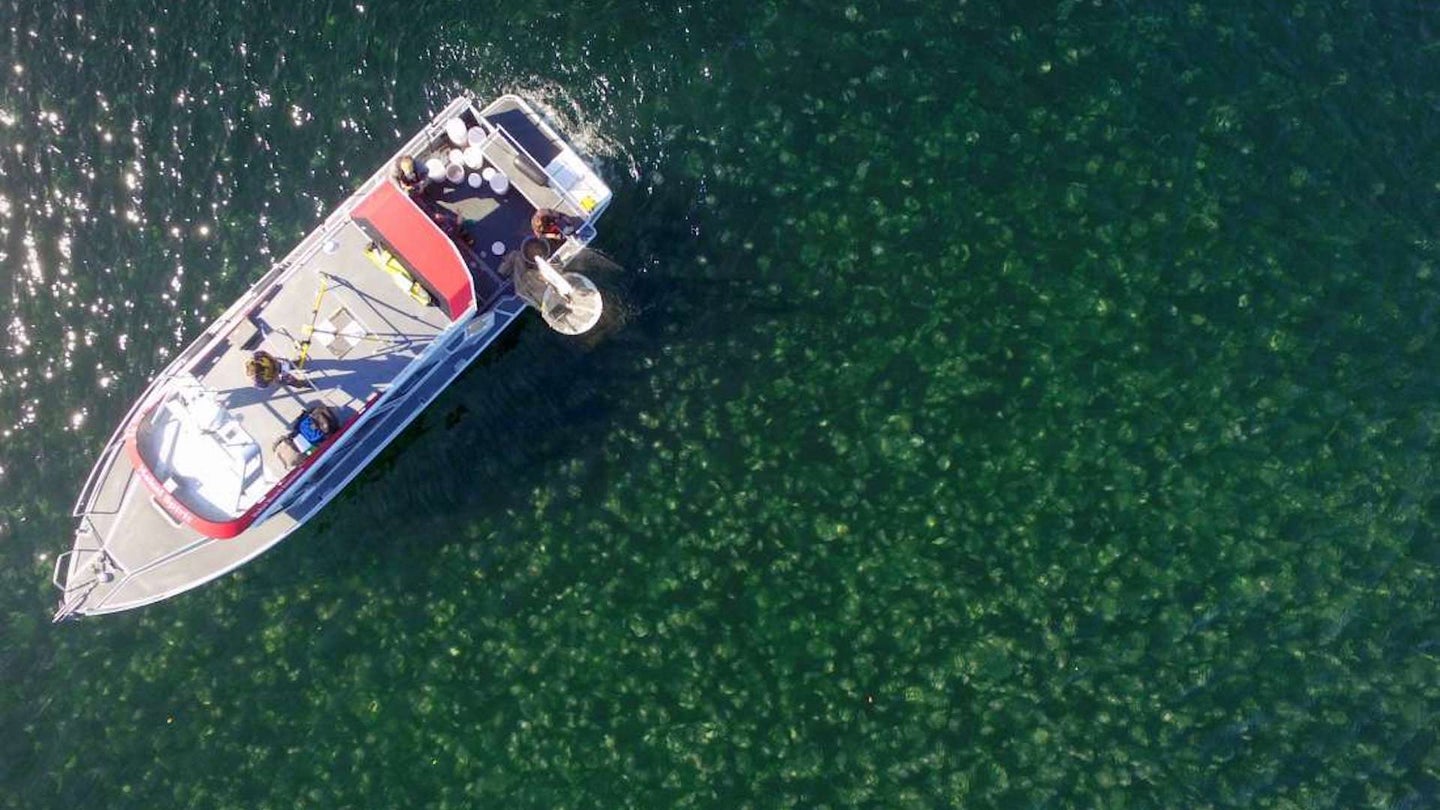A Drone Just Helped Researchers Spot a 70-Ton Swarm of Jellyfish
Check out this drones-eye view of a massive group of gelatinous sea dwellers.

Drones have become quite the valuable tool for marine-life biologists and environmental researchers, in general. The unmanned aerial vehicle, due to its increased affordability and technological capabilities, provides access to mostly unavailable vantage points and continuous monitoring. We recently reported on wildlife biologists using UAVs to fight against the extinction of black-footed ferrets in Montana. According to Mental Floss, a group of researchers just used this modern aerial tool to measure the size of a jellyfish swarm in British Columbia, Canada, which weighed more than 70 tons.
This literally massive discovery via drone was presented in the Marine Ecology Progress Series research journal on Jan. 29. The 70-ton weight, when divided by the average weight of a jellyfish, resulted in an estimate of at least 150,000 jellyfish being discovered. Co-author of the paper, a Hakai Professor in Oceanography at the University of British Columbia in Vancouver, Brian Hunt, was shocked by the scale and impressed by the tool used to discover the swarm. He said, “The size of the bloom surprised me. What was exciting was going from not being able to see the bloom easily, if at all, to instantly being able to find them from the air. It is remarkable how tightly they group together.”
Drones have been used to study the patterns and behaviors of ocean life (and those who disturb it) before, but this particular instant points toward a shift in approach, regarding scientific research. As Hunt himself alluded to, without the UAV in tow, his team might not have spotted this swarm at all. Hunt reportedly claimed that this was the first time a drone was used to spot and study jellyfish blooms, a dramatic change from the previous standard of observing the species from the water’s surface level. The bird’s-eye view employed here can more accurately provide biomass data, behavior, and how currents and tides affect those.
Regarding the actual process here, the research team reportedly sent its drone into the skies from the research vessel stationed amongst the swarm of fish. It collected aerial imagery from above, while the team sampled the surrounding waters from below. The two sets of data were then compared, and the results were a minimum weight of 70 tons, with a potential maximum weight of 128 tons. Moving forward, UAVs could provide even more revealing data, and offer more plausible interpretations regarding when, how, and where jellyfish congregate and how they affect their surroundings. In the most basic terms drones are helping us learn more about our planet and the intricate systems and patterns that make it go around.
